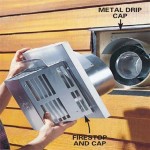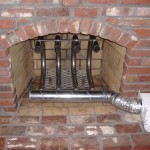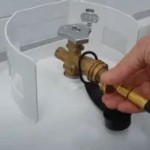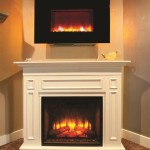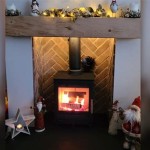Fireplace Refacing with Stone Veneer: A Comprehensive Guide
Fireplace refacing, specifically with stone veneer, presents a transformative opportunity to revitalize an existing fireplace without the extensive labor and expense associated with a complete demolition and rebuild. Stone veneer offers the aesthetic appeal of natural stone at a fraction of the weight and cost, making it an ideal material for updating outdated or aesthetically lacking fireplaces. This article provides a detailed exploration of the process, benefits, and considerations involved in fireplace refacing with stone veneer.
The process of refacing a fireplace involves applying a new facade to the existing structure. This is typically done over the original brick, concrete, or other substrate of the fireplace. Stone veneer, being significantly lighter than natural stone, minimizes the structural burden on the fireplace and surrounding areas. This attribute makes it a suitable solution for a wide range of fireplace designs and architectural styles.
Benefits of Using Stone Veneer for Fireplace Refacing
The advantages of using stone veneer for fireplace refacing are numerous. Its lightweight nature simplifies installation and reduces the need for structural modifications. The material is also more cost-effective than natural stone, making it an accessible option for homeowners seeking a high-end aesthetic without exceeding their budget. Moreover, stone veneer is available in a broad spectrum of colors, textures, and patterns, allowing for significant design flexibility when customizing the fireplace.
Another significant benefit lies in the material’s durability and resistance to environmental factors. Stone veneer is manufactured to withstand temperature fluctuations, moisture, and other potential stressors, ensuring a long-lasting and visually appealing fireplace facade. Its ease of maintenance also contributes to its appeal, requiring only occasional cleaning to maintain its pristine appearance.
Beyond the practical advantages, stone veneer enhances the aesthetic value of a home. A well-refaced fireplace can serve as a focal point, adding warmth and character to a living space. The material’s versatility allows it to complement various interior design themes, from rustic and traditional to modern and contemporary.
Preparation is Key: Assessing the Existing Fireplace
Before embarking on a fireplace refacing project, a comprehensive assessment of the existing fireplace is crucial. This assessment should include a thorough inspection of the structural integrity of the firebox, chimney, and surrounding hearth. Addressing any underlying issues, such as cracks or structural weaknesses, is paramount to ensure the safety and longevity of the refaced fireplace.
Furthermore, the existing facade needs to be evaluated to determine its suitability as a substrate for the stone veneer. Loose or crumbling materials should be removed, and the surface should be cleaned to ensure proper adhesion of the mortar. In some cases, applying a scratch coat of mortar is necessary to create a uniform and textured surface that promotes bonding.
Careful measurements are also essential to accurately calculate the amount of stone veneer required for the project. It is advisable to order slightly more material than needed to account for cuts and waste. Selecting the desired stone veneer style and layout is also a crucial step in the preparation process. Consider the overall design aesthetic of the room and choose a veneer that complements the existing décor.
Ensuring proper ventilation is another critical aspect of fireplace preparation. The refacing process should not obstruct or impede the airflow to the firebox or chimney. Consult with a qualified professional to verify that the refacing project adheres to local building codes and safety regulations.
The Stone Veneer Installation Process: A Step-by-Step Guide
The installation of stone veneer involves a series of steps that demand precision and attention to detail. The process typically begins with applying a thin layer of adhesive mortar to the prepared fireplace surface. The mortar should be specifically designed for use with stone veneer and should be applied according to the manufacturer's instructions.
Next, the individual stone veneer pieces are carefully positioned and pressed into the mortar. Maintaining consistent spacing between the stones is essential for achieving a visually appealing and uniform appearance. Many installers use spacers to ensure consistent joint widths. The stones should be level and plumb, and any excess mortar should be removed immediately to prevent staining.
Cutting the stone veneer to fit around corners and edges requires specialized tools, such as a wet saw with a diamond blade. Precision cutting is critical to achieve a seamless and professional-looking finish. The cut edges should be smoothed and blended with the existing stone veneer to minimize their visibility.
Once the stone veneer is in place, the joints are typically filled with grout. The grout color should complement the stone veneer and the overall design aesthetic. The grout should be applied carefully to avoid staining the stone veneer, and any excess grout should be wiped away promptly. After the grout has dried, it is often sealed to protect it from moisture and stains.
The final step in the installation process involves cleaning and inspecting the refaced fireplace. Any remaining mortar or grout residue should be removed, and the stone veneer should be inspected for any imperfections. Addressing any issues promptly will ensure the long-term durability and aesthetic appeal of the refaced fireplace.
For those unfamiliar with masonry work, it is strongly recommended to hire a qualified professional to install the stone veneer. An experienced installer will have the necessary tools, skills, and knowledge to ensure a successful and long-lasting refacing project. Moreover, a professional installation will typically come with a warranty, providing peace of mind for the homeowner.
Choosing the right mortar is also a crucial step. There are many different types of mortar available, and it is important to select one that is specifically designed for use with stone veneer. The mortar should be compatible with the substrate of the fireplace and should provide a strong and durable bond. Consult with a masonry supplier or installer to determine the best mortar for your specific project.
Proper curing of the mortar is also essential for ensuring its strength and durability. The mortar should be kept moist for several days after installation to allow it to cure properly. This can be achieved by covering the refaced fireplace with plastic sheeting or by misting it with water regularly.
Maintaining the newly refaced fireplace involves regular cleaning and inspection. The stone veneer should be cleaned periodically with a mild detergent and water to remove any dirt or grime. Inspect the grout joints regularly for any cracks or damage and repair them promptly to prevent water infiltration. Avoid using harsh chemicals or abrasive cleaners, as they can damage the stone veneer.
Design Considerations: Style and Aesthetics
The design possibilities for fireplace refacing with stone veneer are virtually limitless. The vast array of colors, textures, and patterns available allows for creating a fireplace that seamlessly integrates with the existing décor or becomes a striking focal point. Consider the overall style of the room when selecting the stone veneer. For a rustic or traditional aesthetic, choose a natural-looking stone veneer with irregular shapes and textures. For a more modern or contemporary aesthetic, opt for a sleek and uniform stone veneer with clean lines.
The size and shape of the stone veneer can also significantly impact the overall appearance of the fireplace. Larger stones can create a dramatic statement, while smaller stones can add a subtle and textured look. Experiment with different layouts and patterns to find the perfect combination for your space. Consider the color of the stone veneer in relation to the surrounding walls and furniture. A contrasting color can create a bold statement, while a complementary color can create a more cohesive look.
Lighting can also play a crucial role in enhancing the aesthetic appeal of a refaced fireplace. Install accent lighting to highlight the texture and color of the stone veneer. Use dimmable lights to create a warm and inviting ambiance. Consider incorporating a mantel or hearth to further enhance the design of the fireplace. A well-chosen mantel can add character and functionality to the fireplace, while a hearth can provide a comfortable place to sit and relax.
Ultimately, the design of a refaced fireplace should reflect personal taste and style. Take the time to explore different options and find the perfect combination of stone veneer, layout, color, and lighting to create a fireplace that is both beautiful and functional.

Refacing A Fireplace With Stone Veneer Horizon

Fireplace Refacing Natural Vs Manufactured Stone Veneer Blog

The Timeless Elegance Of Stone Veneer For Modern Fireplace Design 27 Ideas

Natural Stacked Stone Veneer Fireplace Ideas

Read This Before Your Stone Fireplace Makeover Understanding Undertones

Stone Veneer The Natural Choice For Your Home Remodel Ply Gem Fireplace Grey Brick Makeover

17 Modern Stacked Stone Fireplace Ideas For Your Home

12 Stacked Stone Fireplace Ideas For Optimal Coziness

Remodel Your Fireplace In Natural Stone Use

Remodel Your Fireplace In Natural Stone Use


